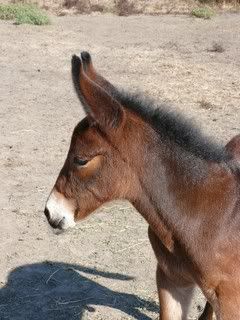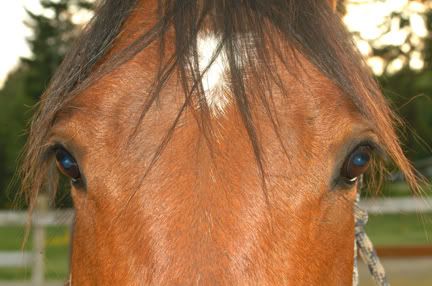Post by jenm on Nov 20, 2008 16:50:54 GMT -5
www.thehorse.com/ViewArticle.aspx?ID=13119&nID=22&src=RA
The Unwanted Horse Coalition (UHC) is performing further research into the issue of unwanted horses, with help from participants in the equine industry. The first step in this effort is an online survey, available at Survey.ictgroup.com/uhcsurvey
Although some say the number of unwanted horses is on the rise, there are few documented facts about the accurate number of unwanted horses, their age, sex, breed, recent use, value, or what happens to them in the long run.
"Although there are numerous media reports and much anecdotal evidence of a growing problem with unwanted horses, there have been no studies or surveys done to attempt to document it," said Jay Hickey, president of the American Horse Council (AHC), the national association that represents all segments of the horse industry in Washington, D.C. "The downturn in the economy, rising costs of hay, the drought that has affected many parts of the United States, the costs of euthanasia and carcass disposal, and the closing of the nation's slaughter facilities have all made the problem worse. But no one knows its magnitude. That's why the first step toward a solution is to gather and examine the facts. The goal of this survey is to get the input, observations, opinions and suggestions from anyone and everyone involved with horses."
The effort, known as the "Study on Contributing Factors Surrounding the Unwanted Horse Issue" will be instrumental in filling factual gaps with actual data on:
* Awareness of the unwanted horse problem and perceived trends in recent years;
* Level of concern;
* Factors contributing to the problem;
* Direct and indirect experience with the issue;
* Actions taken by owners;
* Expectations about responsibility and assistance;
* Solutions.
An independent research firm developed the questionnaire and is hosting the online survey site at Survey.ictgroup.com/uhcsurvey. The firm will also tabulate and analyze responses, and provide a full report.
A comprehensive view of the problem depends on representation from all corners of the horse industry, according to Tom Lenz, DVM, chairman of the UHC. "To ensure the broadest possible participation, we're working to involve a variety of individuals, associations, state and local agencies, and equine-related companies to actively encourage their constituencies to take the survey and voice their opinions."
The Unwanted Horse Coalition (UHC) is performing further research into the issue of unwanted horses, with help from participants in the equine industry. The first step in this effort is an online survey, available at Survey.ictgroup.com/uhcsurvey
Although some say the number of unwanted horses is on the rise, there are few documented facts about the accurate number of unwanted horses, their age, sex, breed, recent use, value, or what happens to them in the long run.
"Although there are numerous media reports and much anecdotal evidence of a growing problem with unwanted horses, there have been no studies or surveys done to attempt to document it," said Jay Hickey, president of the American Horse Council (AHC), the national association that represents all segments of the horse industry in Washington, D.C. "The downturn in the economy, rising costs of hay, the drought that has affected many parts of the United States, the costs of euthanasia and carcass disposal, and the closing of the nation's slaughter facilities have all made the problem worse. But no one knows its magnitude. That's why the first step toward a solution is to gather and examine the facts. The goal of this survey is to get the input, observations, opinions and suggestions from anyone and everyone involved with horses."
The effort, known as the "Study on Contributing Factors Surrounding the Unwanted Horse Issue" will be instrumental in filling factual gaps with actual data on:
* Awareness of the unwanted horse problem and perceived trends in recent years;
* Level of concern;
* Factors contributing to the problem;
* Direct and indirect experience with the issue;
* Actions taken by owners;
* Expectations about responsibility and assistance;
* Solutions.
An independent research firm developed the questionnaire and is hosting the online survey site at Survey.ictgroup.com/uhcsurvey. The firm will also tabulate and analyze responses, and provide a full report.
A comprehensive view of the problem depends on representation from all corners of the horse industry, according to Tom Lenz, DVM, chairman of the UHC. "To ensure the broadest possible participation, we're working to involve a variety of individuals, associations, state and local agencies, and equine-related companies to actively encourage their constituencies to take the survey and voice their opinions."



